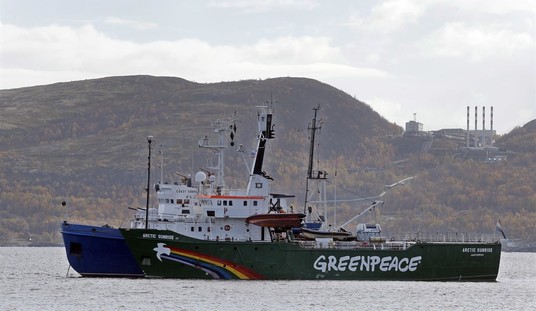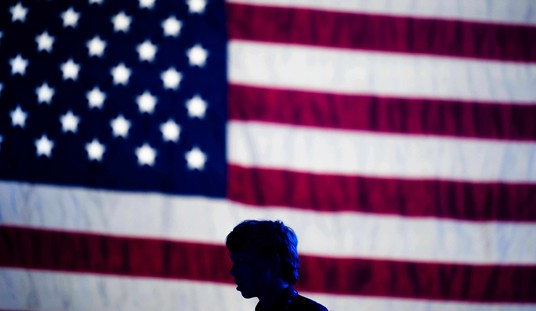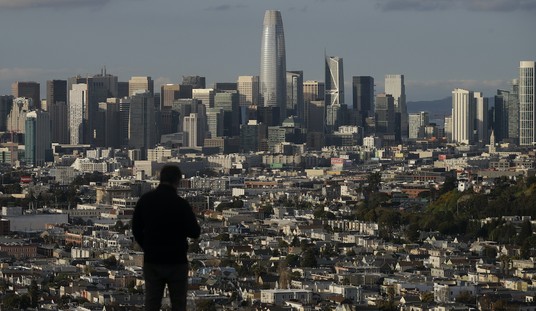Tom Bossert, who used to be Trump’s top pandemic advisor before John Bolton shut down his department, calls this idea “the coronavirus paradox.” Social distancing is a preventative strategy more so than a remedial strategy, and because the virus is so contagious time is of the essence in implementing it. That means that draconian measures need to be taken *before* there’s a major outbreak in a community and exponential growth takes off. If a governor shuts down schools for two weeks when there are 50 cases in-state and two weeks later there are only 100 cases total, that doesn’t mean he or she overreacted.
That means it worked. People really did flatten the curve by keeping their distance.
To argue otherwise, you need a theory for why a virus that spreads exponentially everywhere else in the world somehow wouldn’t spread exponentially here if business went on as usual. What makes us different from Italy and France and Spain and Germany and various other European countries that are seeing the same sort of exponential growth our (very limited) data shows in the U.S. right now? Nothing makes us different. This is math, says Bossert:
Public health officials and scientists studied the implementation of non-pharmaceutical interventions for epidemic mitigation in 43 cities in the United States from Sept. 8, 1918, through Feb. 22, 1919, when an influenza outbreak– one that killed 50 million people worldwide — became the last major pandemic to affect the United States. They did this to determine whether city-to-city variations in death rates were associated with the timing, duration and combination of non-pharmaceutical interventions. They concluded that they were.
The key, according to an article published in the Journal of the American Medical Association, is “early, sustained, and layered application of non-pharmaceutical interventions.” The doctors concluded that “such measures could potentially provide valuable time for production and distribution of pandemic-strain vaccine and antiviral medication. Optimally, appropriate implementation of non-pharmaceutical interventions would decrease the burden on health care services and critical infrastructure.”
The biggest misunderstanding about these interventions is they are an à la carte menu of options to be selectively implemented. This is dead wrong. They all must be implemented to achieve a layered effect.
Anthony Fauci and Scott Gottlieb made the same point yesterday. Shutting down schools and businesses looks like an overreaction only because exponential growth is “invisible” in its early stages. No one notices when two cases turn into four, then four into eight, then eight into 16. But after 3,000 have turned into 6,000 and then 12,000 in a week, there are too many carriers circulating to sharply mitigate the spread with aggressive isolation measures.
Head of @NIAIDNews Dr. Anthony Fauci said earlier this week that the #CoronavirusPandemic will get worse in the U.S. before it gets better.
How much worse? Dr. Fauci to @margbrennan this morning: “It’s going to depend on the effectiveness of our response” pic.twitter.com/mD0WKoufZf
— Face The Nation (@FaceTheNation) March 15, 2020
Should Americans expect a lockdown nationwide to combat the spread of #coronavirus? @ScottGottliebMD warns we may have to do "much more."
"We have never seen anything like this before in modern times. This is gonna be historic right now."
WATCH → pic.twitter.com/hYWRHD3L82
— Face The Nation (@FaceTheNation) March 15, 2020
It’s simple math, as different regions in Italy are proving:
Real-time evidence of flattening the curve. Lodi had the first Covid-19 case in Italy, and implemented a shutdown on Feb 23. Bergamo waited until March 8.
Look at the difference.Incredible research by @drjenndowd, @melindacmills & co-authors. https://t.co/JYf1F5GnYu pic.twitter.com/iMVXBJ59Y6
— Don Moynihan (@donmoyn) March 15, 2020
Two weeks’ difference in aggressive shutdown measures. Lodi, which started out with more cases than Bergamo, now has less than half the number. And Italians elsewhere have been howling at people in other countries not to make the same mistake they did by refusing to isolate themselves until after a mass outbreak had already begun locally. There’s no speculative or hypothetical element in any of this. If we’re fortunate enough not to find ourselves drowning in an Italy scenario next month, it’ll only be because we “overreacted” at a moment when we still had an opportunity to arrest a mass contagion.
Maybe we’re past that moment already:
NY Governor Cuomo says he doesn’t think NY area can flatten the curve enough to avoid overwhelming the health care system
— Kasie Hunt (@kasie) March 16, 2020
If we’re not past the moment for effective action, a few weeks from now it may look like social distancing has failed to limit the spread — that is, instead of people complaining about an overreaction with all the shutdowns, early April might bring a wave of complaints that the shutdowns were ineffective in slowing it down. Aaron Carroll, a researcher at Indiana University, urges people to bear some things about the numbers to come over the rest of this month in order to keep a proper perspective:
There are a few reasons for that. The first is that we may do most testing. When we a case is announced, it's not a new infection. It's a found infection. There's a lot more out there than we "know" just because we haven't been able to look. Once we do, we will find it.
— Aaron E. Carroll (@aaronecarroll) March 16, 2020
It takes a number of days (up to 2 weeks) for some people to show symptoms of COVID-19. Therefore, many people who are now social distancing are already infected. When they get sick – it's not a failure of the distancing. They were already infected.
— Aaron E. Carroll (@aaronecarroll) March 16, 2020
The flattening of the curve is still sometime off, even with social distancing. So we have to remain committed, even as the numbers go up over the next week or two.
Don't see that as a failure. It's somewhat inevitable. Don't panic. Prepare yourselves for the news.
— Aaron E. Carroll (@aaronecarroll) March 16, 2020
Testing will improve and identify more extant cases, which will appear like an “explosion” of new ones, and some who were just beginning to develop symptoms when more aggressive isolation measures were ordered in states and major cities will see finally see the illness in full flower. The new measures will help keep them away from others, which is how the proverbial curve eventually “flattens.” It just doesn’t flatten overnight. Which is bad news for hospital doctors and nurses, who are reportedly “worried and scared” that they don’t have all the protective equipment they need and still can’t test patients reporting symptoms in order to know which people with “flu-like symptoms” need treatment for COVID-19 and which don’t.
It would be a wonderful thing if social distancing measures could remain strictly voluntary. Leave all businesses open and trust a rational, well-informed populace not to frequent them at a moment when they’re being urged to isolate. Alas, we do not live in that universe:
https://twitter.com/CashNastyGaming/status/1239039704181493761
One way you can tell that the calls for social distancing are starting to penetrate culturally is that major celebrities are getting involved to spread the word. Taylor Swift and Ariana Grande are pushing the “stay home” message, as are sports stars like Steph Curry.
We all have to take responsibility for ourselves and do whatever it takes to #stopthespread. There’s a sense of urgency to flatten the curve and give ourselves and the healthcare system the best chance to get through this pandemic. Share this message and let’s protect each other! pic.twitter.com/T8JfydahCu
— Stephen Curry (@StephenCurry30) March 15, 2020
The fateful question is: How long will it go on? If we all stay away from each other for a month, bringing the economy to its knees, what ground will we have gained against the virus by the time we all start interacting again? Warmer weather in the south might slow it down there soon, and then later in the north as summer begins. Testing will be available more comprehensively. Maybe we’ll have more ventilators and masks online for health-care workers. Buying time helps, but as the Dow continues to shed endless billions of dollars in wealth, the urgency to resume commerce and avert a depression will grow more intense. What’s different a month from now after the curve has been flattened and we all start shaking hands again? Read this thread by Scott Gottlieb, who’s encouraged by the measures taken lately, says we’re ahead of where China was at this point, and thinks we might turn a corner five or six weeks from now. Then we get a breather to prepare for the return of COVID-19 in the fall, hopefully with an effective antiviral drug and much faster testing to fight it.








Join the conversation as a VIP Member